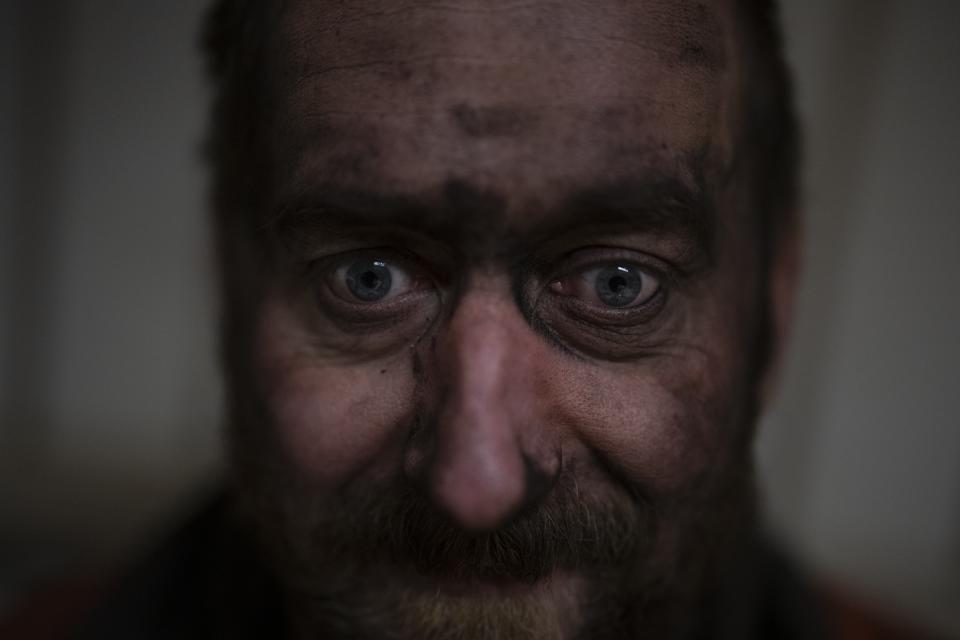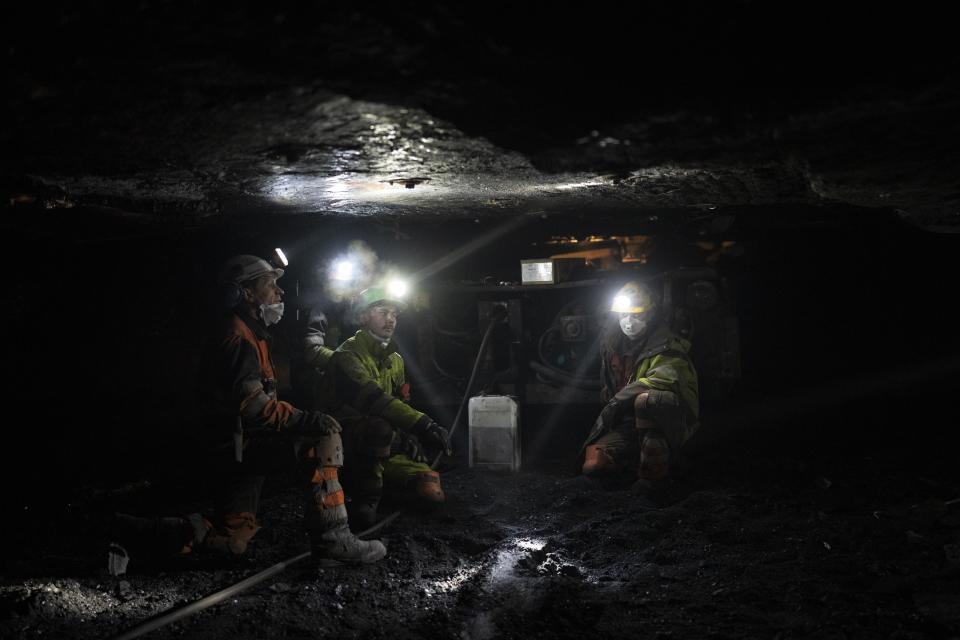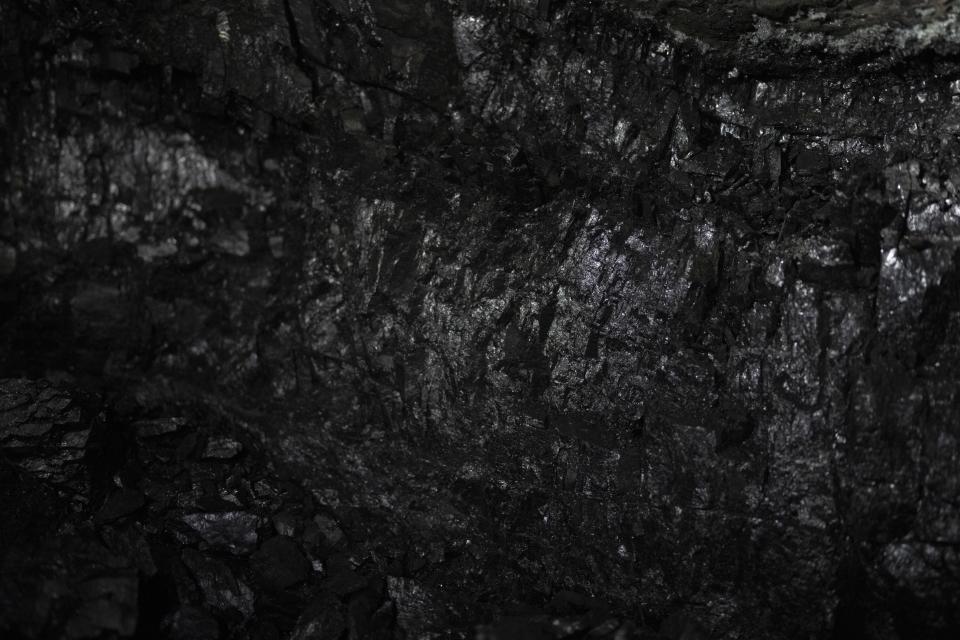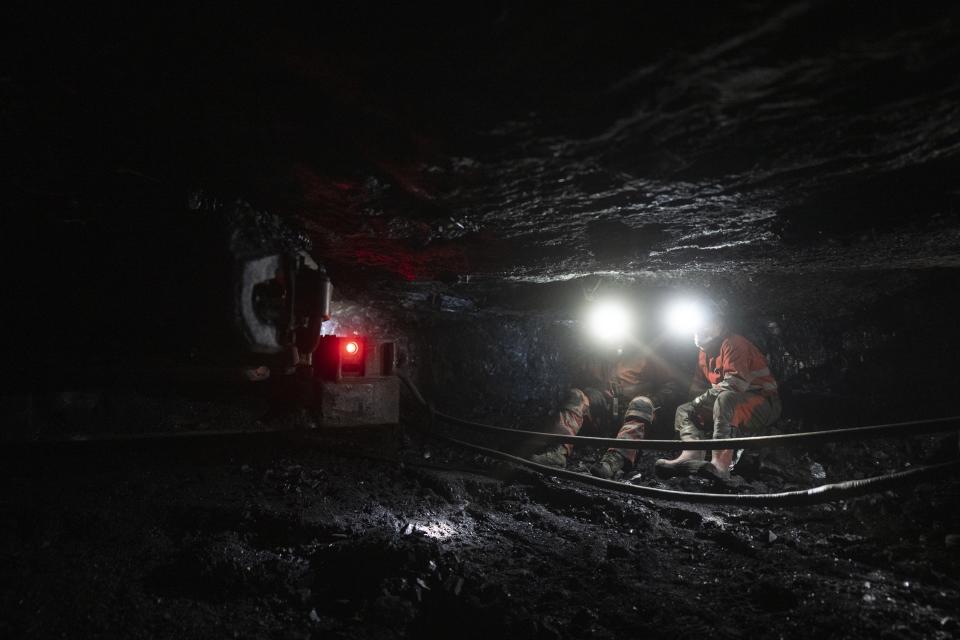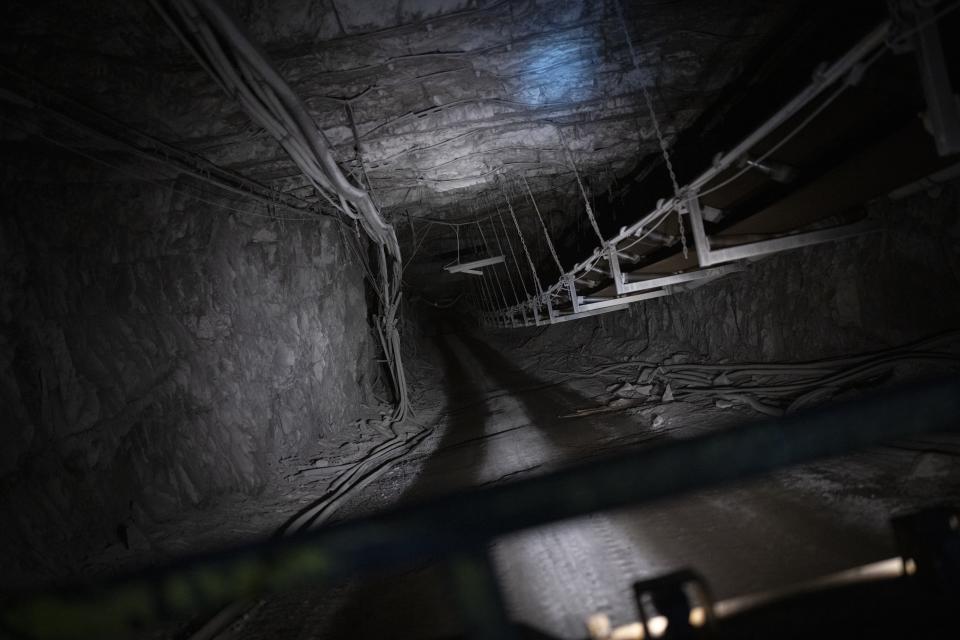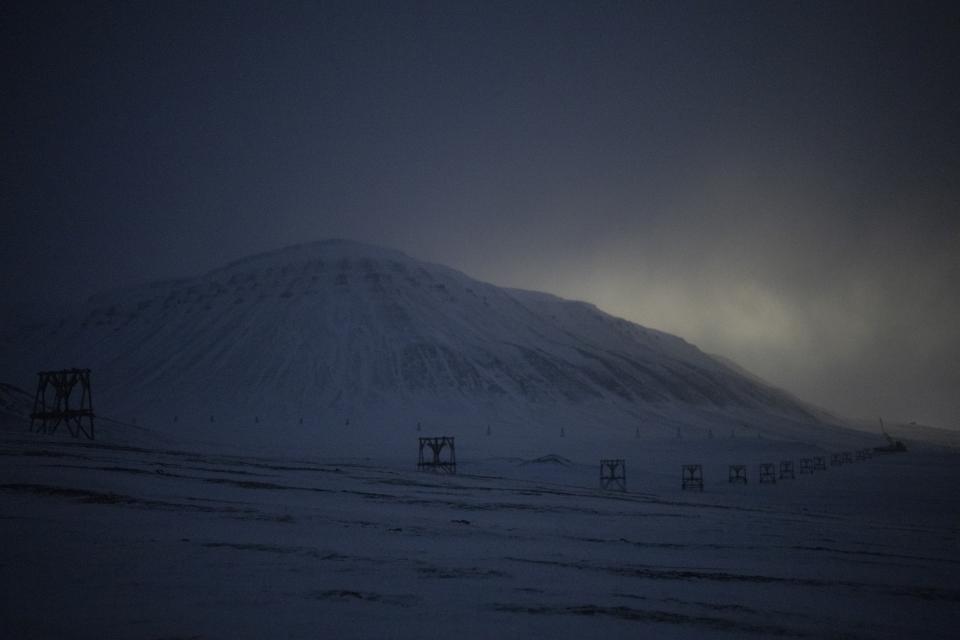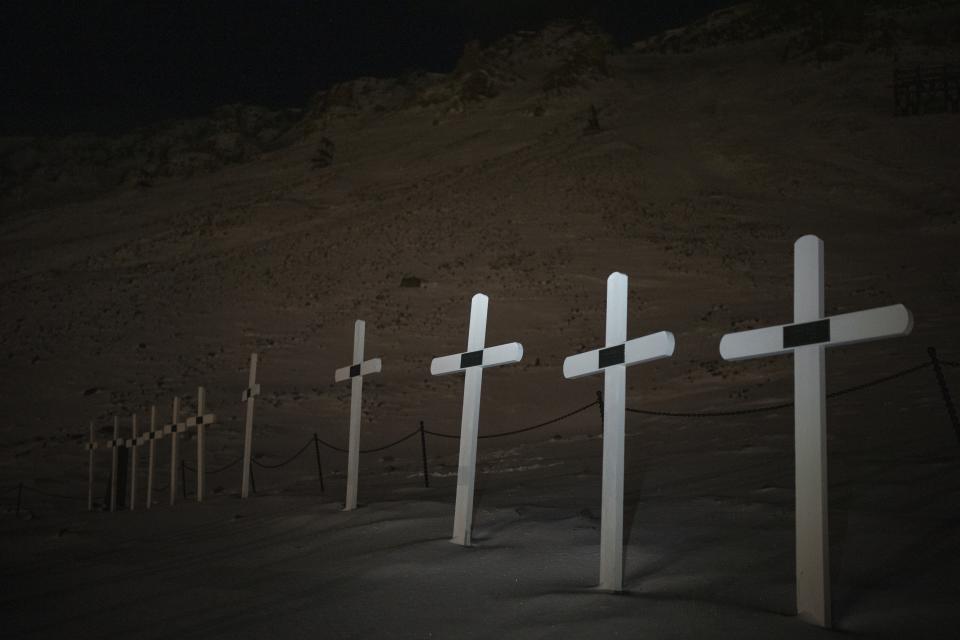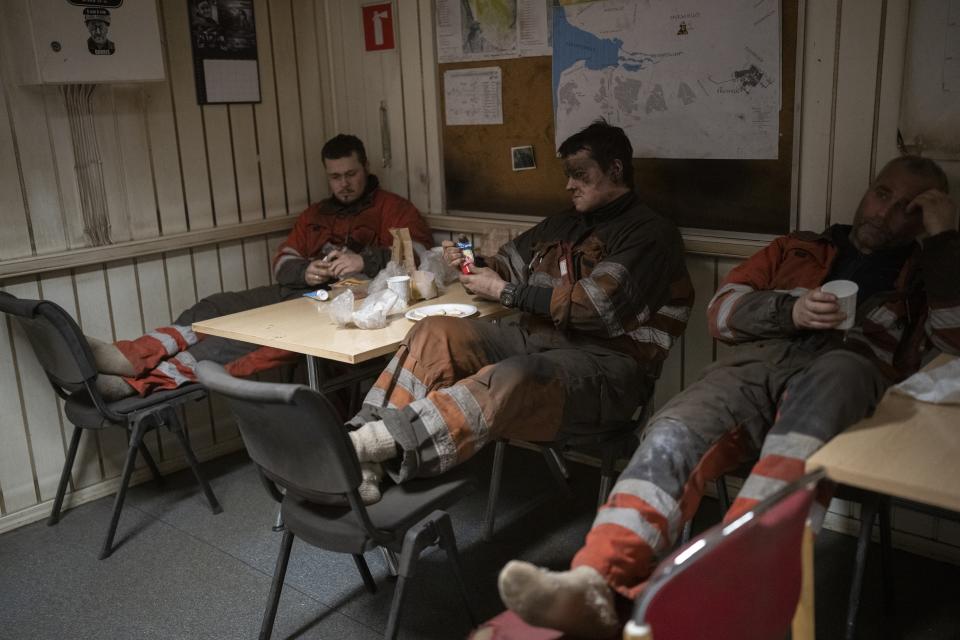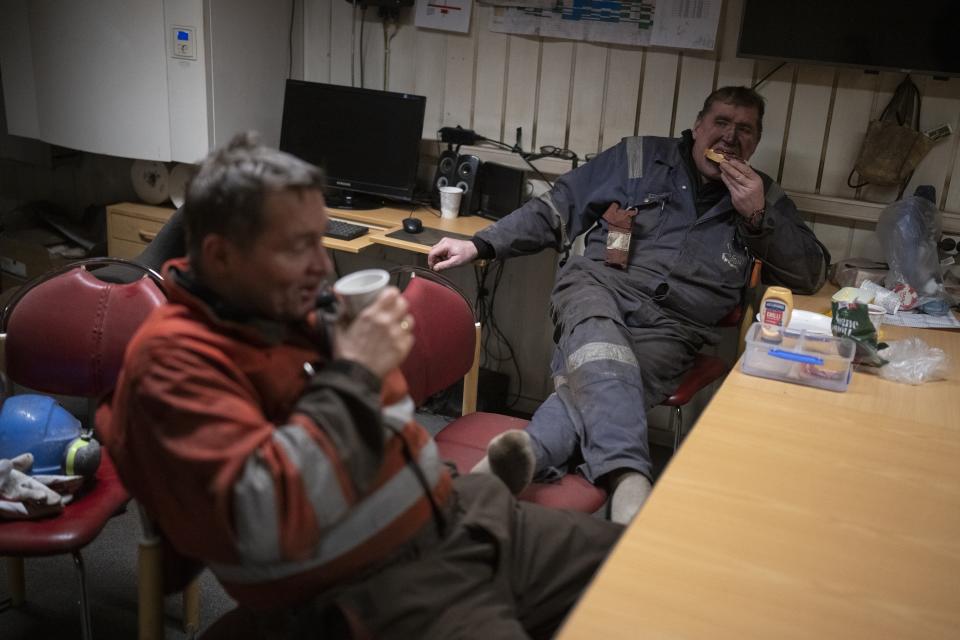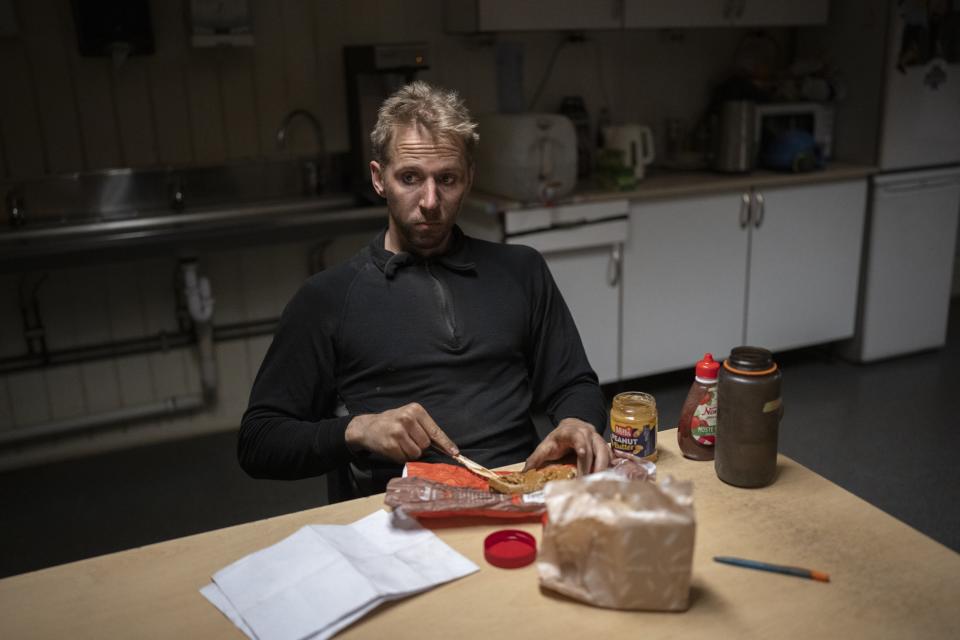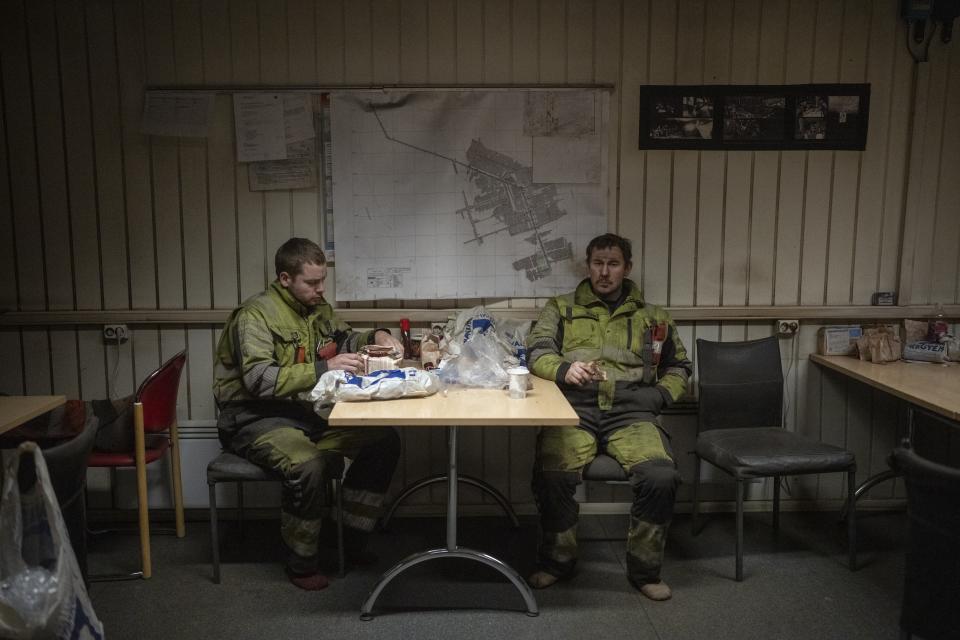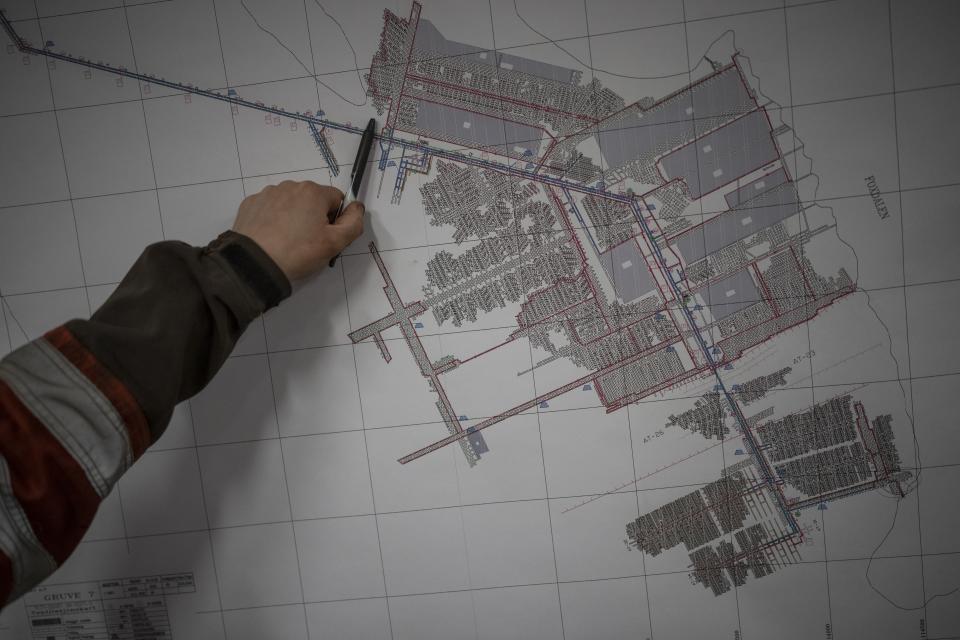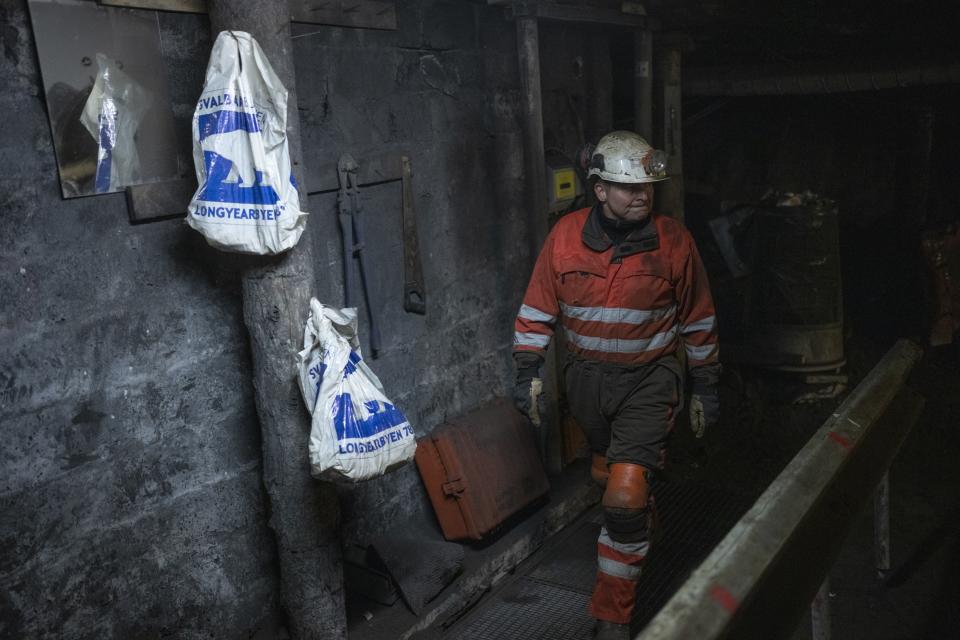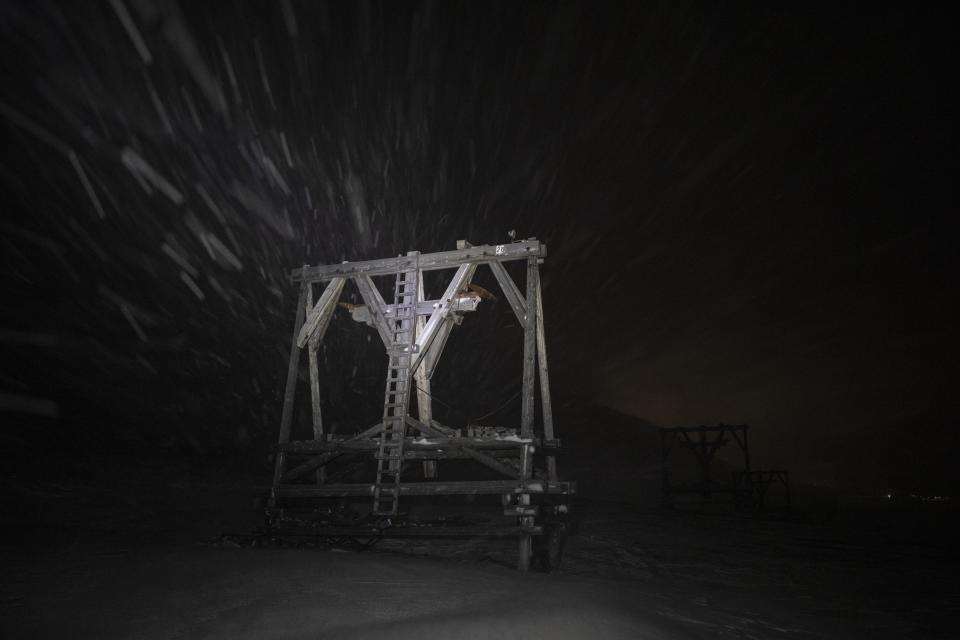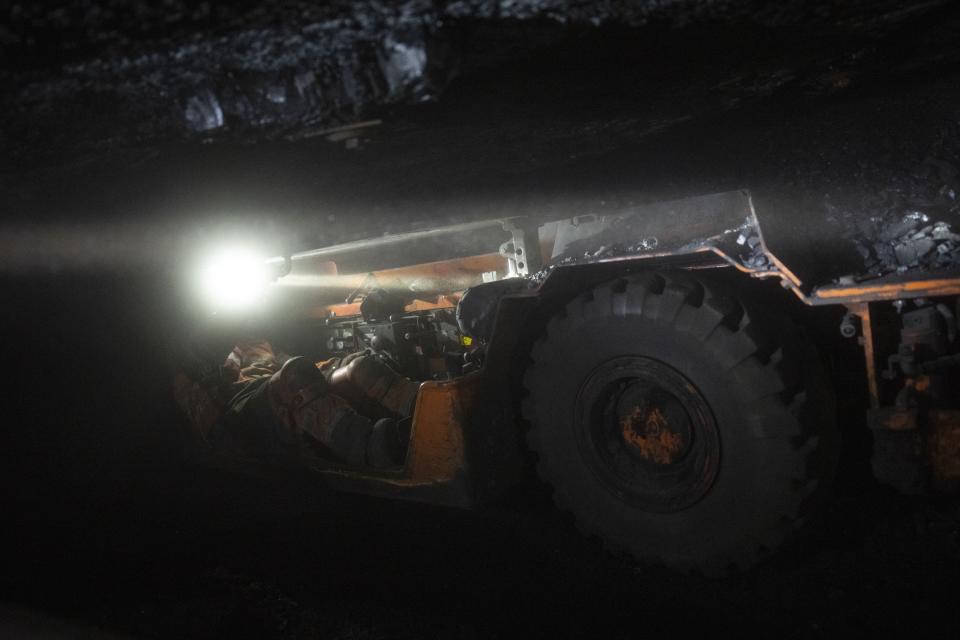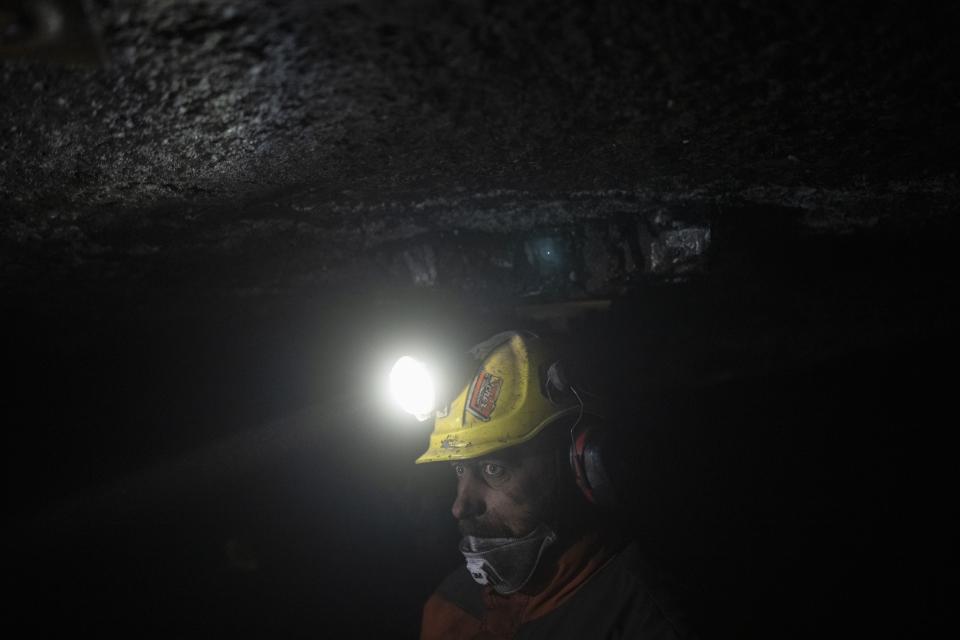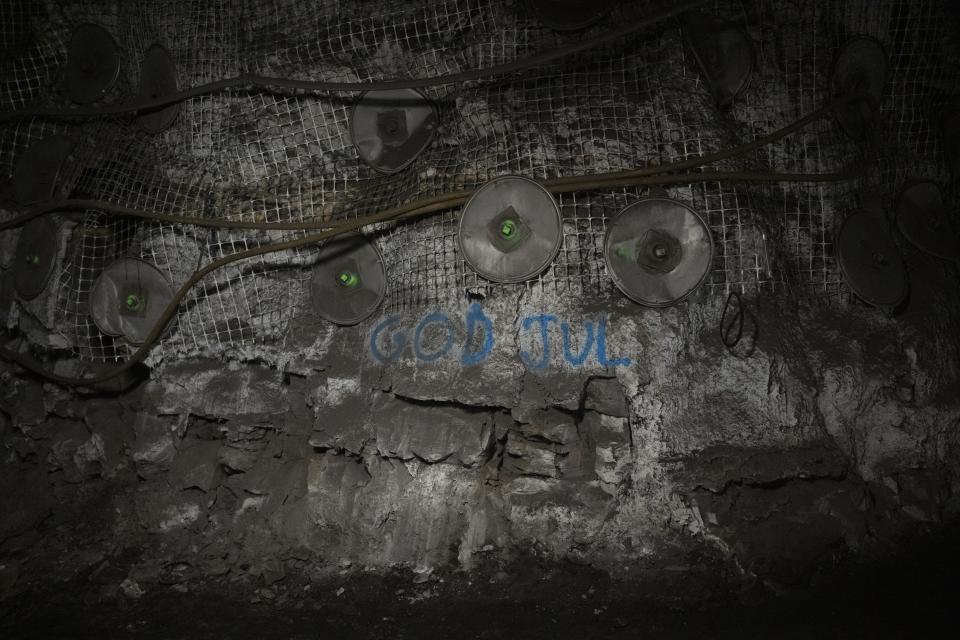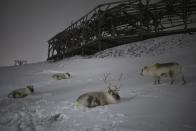Norway's last Arctic miners struggle with coal mine's end
ADVENTDALEN, Norway (AP) — Kneeling by his crew as they drilled steel bolts into the low roof of a tunnel miles-deep into an Arctic mountain, Geir Strand reflected on the impact of their coal mine’s impending closure.
“It’s true coal is polluting, but … they should have a solution before they close us down,” Strand said inside Gruve 7, the last mine Norway is operating in the remote Svalbard archipelago.
It’s scheduled to be shut down in two years, cutting carbon dioxide emissions in this fragile, rapidly changing environment, but also erasing the identity of a century-old mining community that fills many with deep pride even as the primary activities shift to science and tourism.
“We have to think what we’re going to do,” Strand, a 19-year mining veteran, told two Associated Press journalists as his headlamp spotlighted black dust and the miners’ breath in the just-below-freezing tunnel. “(Mining) is meaningful. You know the task you have is very precise. The goal is to get out coal, and get out yourself and all your crew, safe and healthy.”
After the main village of Longyearbyen, 16 kilometers (10 miles) away, announced it would switch its only energy plant from coal-fired to diesel this year, and later to greener alternatives, mining company Store Norske decided it would close its last mine in Svalbard. The date was then postponed to 2025 because of the energy crisis precipitated by the war in Ukraine.
Puzzlement over the future mingles with grief for the end of an era. It permeates the underground room where the last five dozen soot-covered miners take a break during their 10-hour shifts and the stylish café where their retired predecessors gather on weekday mornings to trade news.
“A long, long tradition is fading away,” said foreman Bent Jakobsen. “We’re the last miners. Makes me sad.”
The history of mining and its perils are etched on the mountainside in Longyearbyen. Below abandoned coal conveyor towers on a mid-January day, a trail of footprints in the snow led to a memorial monument, floodlit in the constant darkness of winter’s polar night, listing the 124 miners who have died on the job since 1916.
“I’ve been there, and families go there,” said Trond Johansen, who worked in mining for more than 40 years.
The half dozen other retired miners sipping their morning coffee were quick with more examples of the sacrifice that mining entailed, citing the exact ages and dates when colleagues were killed.
Among the last was Bent Jakobsen’s older brother, Geir, who was 24 when he was crushed to death inside Gruve 3 in 1991. Their eldest brother, Frank, who also worked at the mine, rushed to the scene only to be told by the doctor that it wasn’t survivable. Frank did most of the research for the memorial, erected in 2016.
“We have a place to go and put flowers on Christmas Eve,” Frank said. “It’s not only our brother, it’s other colleagues, too.”
Longyearbyen’s only pastor, the Rev. Siv Limstrand, whose Svalbard Kirke was founded by the mining company a century ago and still plays a critical role in the community, said it’s important to recognize the pain.
“People ask themselves the question, ‘Was it (worth) nothing?’ So there’s a kind of sorrow,” Limstrand said in the church’s cabin, a retreat built in the broad valley below where Gruve 7’s entrance lights shone in the polar night. “It should upset us in the community.”
In nearly two decades at Gruve 7, Bent Jakobsen rose to production manager and is now working on the clean-up processes needed for the closure.
His pride in the job is palpable, whether he’s driving down a 6-kilometer (3.7 mile) tunnel dug with “a lot of time, a lot of sweat, a lot of swearing,” or scraping off a piece of 40-million-year-old coal, or checking one of the steel bolts, each 1.2 meters long (4 feet), that hold up 400 meters (1,300 feet) of mountain above the workers.
“We’re a really tight-knit group in the mine, because you actually trust and lay your lives in the hands of others every day,” he said.
Jakobsen has seen how the landscape outside the mine is rapidly changing, too. Scientists say this slice of the Arctic warms up faster than most of the rest of the world.
From his childhood, the Svalbard native recalls the rhythmic clanking of the coal carts making their way across town, every day except Sunday. Today, herds of reindeer dig through the snow for moss and grass by the disused mining conveyances.
Jakobsen remembers when the archipelago’s fjords regularly froze over in winter, giving polar bears easy passage, while earlier this month it was all open water. He’s unconvinced, however, that closing the mine will make a significant difference.
Environmental scientists agree that Svalbard’s own emissions are minuscule – its coal reserves could keep the global economy running for about 8 hours, according to Kim Holmén, a special advisor at the Norwegian Polar Institute and professor of environment and climate. But they counter that every pollutant counts, and the archipelago can set an example.
“We’re all part of the problem and should become part of the solution ... every action has a symbolism, is a value, period,” Holmén said.
Most of all, Jakobsen and others in mining worry about the alternatives, especially since Gruve 7 exports coal for Europe’s metallurgic industry – like car engine construction in Germany – in addition to feeding the local energy plant.
“If you don’t take coal from us, you’ll take coal from someone else where it’s not that good – the world needs to take coal for your Tesla battery,” he said.
Even windmill components need coal, added Elias Hagebø, his face smeared with coal dust as he grabbed a quick lunch in the mine’s underground break room.
“If they just throw away coal, it’s stupid,” he said. At 18, he’s the youngest worker, and hopes he’ll be able to make a career in the mine just like his father.
Furthermore, Russia has operated mines in Svalbard for 93 years under an international treaty that gave Norway sovereignty on the archipelago while allowing all signatory nations equal rights to commercial enterprise.
“There are no plans to decrease this operation,” Ildar Neverov, director general of Russia’s mining company Arcticugol, told AP in an email from Barentsburg, a village about 37 miles (60 kilometers) from Longyearbyen.
Given the race by global powers, including China, for increasingly profitable natural resources in Arctic, some in Longyearbyen worry that Norway might give up precious rights by closing the mine.
“It will be an unusual situation if the only nation doing mining is the Russians. This is a very geopolitical place,” Arnstein Martin Skaare, a businessman and former shareholder in Store Norske, said at the retired miners’ coffee hour in Longyearbyen’s café.
Back inside Gruve 7, crouched in a 1.3-meter-high (4.1 foot) tunnel, Jonny Sandvoll said he wished people understood more about coal and its uses before deciding to close the mine.
“It’s not the right way to do it,” said Sandvoll, a miner’s son with 20 years in mining. Then he refocused on the huge machine next to him that loudly burrowed into the shining black vein and extracted more coal.
___
Associated Press religion coverage receives support through the AP’s collaboration with The Conversation US, with funding from Lilly Endowment Inc. The AP is solely responsible for this content.
___
Associated Press climate and environmental coverage receives support from several private foundations. See more about AP’s climate initiative here. The AP is solely responsible for all content.

 money
money 